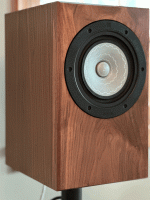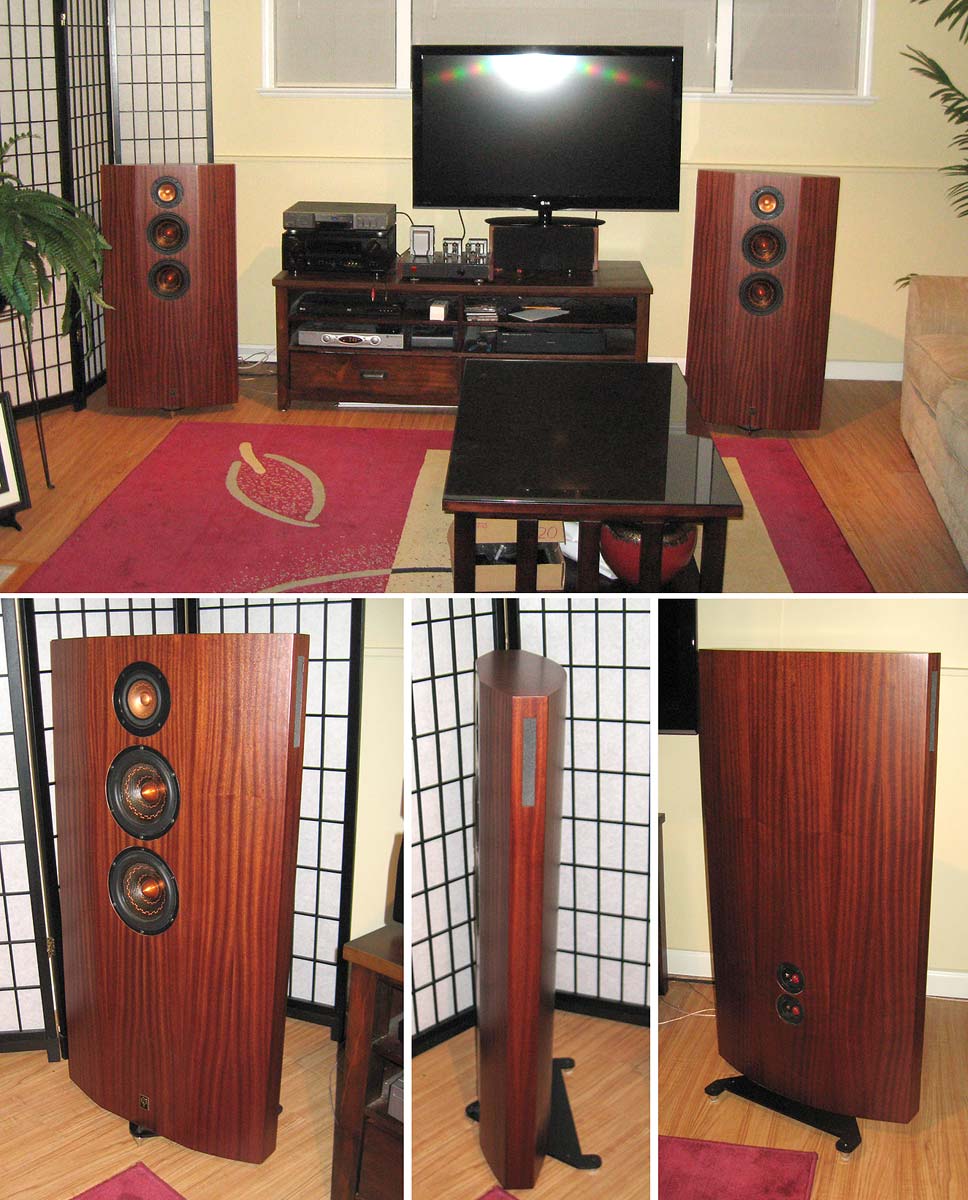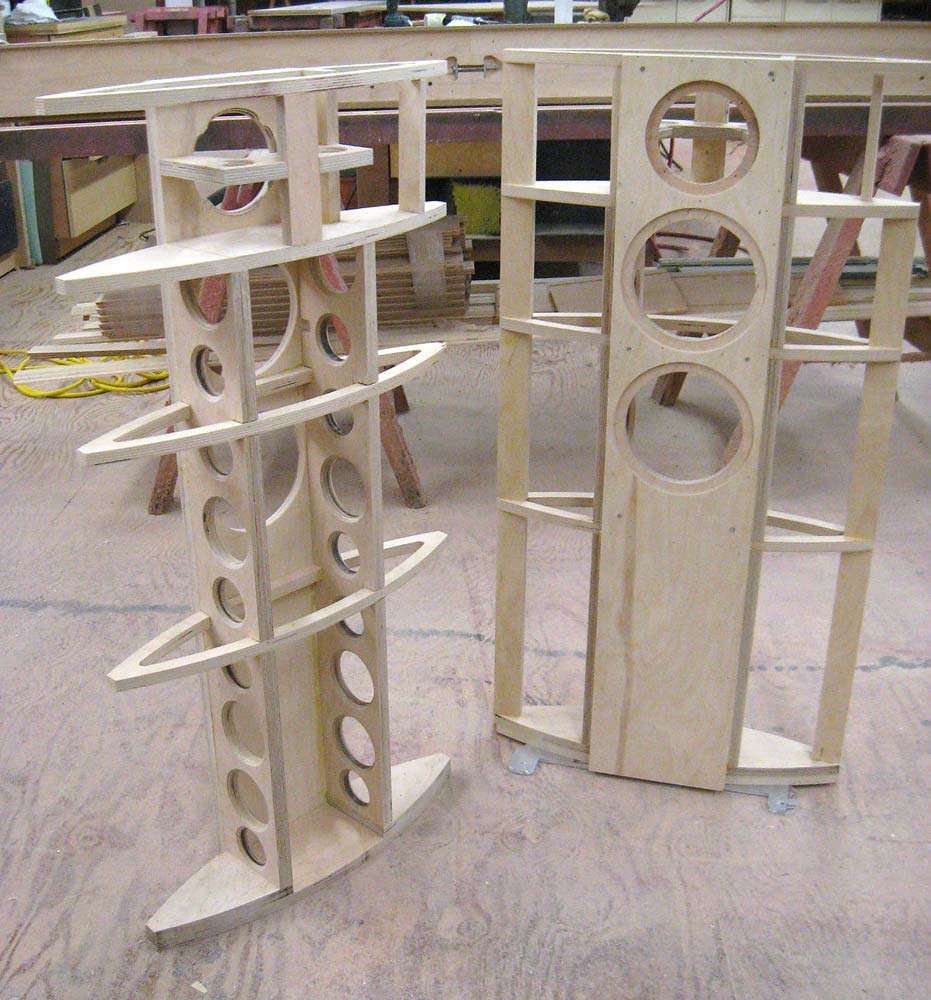Yes, of course: many times, including in several commercial speakers, while every single design I produce for Markaudio, Dave & my websites, clients, this forum or elsewhere specifically accounts for amplifier output impedance or equivalent effects from series R, be it a deliberate introduction, secondary effect of other components or wire loop / connections.
I've zero concern about properly specified resistor power handling (which is why I didn't even mention it) -this isn't a difficult task and a suitable minimum rating can be easily established from a couple of basic equations, or simply over-specifying -my personal favourite is a series-parallel grid of 2w metal films. The fact remains though that you are burning up amplifier power in the resistor, so by definition it's impossible for it to 'increase the available overhead' since headroom is purely a function of system efficiency & the power available. Reduce the efficiency (with resistive losses), you reduce the headroom by the same amount. You say that yourself when you had to turn the wick up. What it can do though, by artificially reducing electrical damping / raising the driver Q, is alter the LF alignment, and / or in more extreme cases clipping the LF dynamic peaks, with the result that the uncompressed, lower current-draw mids & HF stand out more, subjectively giving the impression of more 'detail'.
I've zero concern about properly specified resistor power handling (which is why I didn't even mention it) -this isn't a difficult task and a suitable minimum rating can be easily established from a couple of basic equations, or simply over-specifying -my personal favourite is a series-parallel grid of 2w metal films. The fact remains though that you are burning up amplifier power in the resistor, so by definition it's impossible for it to 'increase the available overhead' since headroom is purely a function of system efficiency & the power available. Reduce the efficiency (with resistive losses), you reduce the headroom by the same amount. You say that yourself when you had to turn the wick up. What it can do though, by artificially reducing electrical damping / raising the driver Q, is alter the LF alignment, and / or in more extreme cases clipping the LF dynamic peaks, with the result that the uncompressed, lower current-draw mids & HF stand out more, subjectively giving the impression of more 'detail'.
Last edited:
No I think you caught up on the wording and maybe overlooked the key insight. What's the point of having 100W in the first place, if the upper 90-something watts is unusable because of the way it overdrives the speaker? To my ears anyway, the mod extended the useable upper limit by a few dB and a few watts, so in that sense it did increase the available overhead. As always though, YMMV.burning up amplifier power in the resistor, so by definition it's impossible for it to 'increase the available overhead' since headroom is purely a function of system efficiency & the power available. Reduce the efficiency (with resistive losses), you reduce the headroom by the same amount. You say that yourself when you had to turn the wick up.
What 'key insight' are you referring to -specifically, this 'usable upper limit' and 'available overhead'? Upper limit and available overhead of what? Frequency response? Dynamic range? Power handling? Something else? Since it's a physical impossibility for it to be dynamic range or power handling, since the former is by definition reduced (even if the available power swamps the losses, it doesn't alter the fact that they are losses, not gains) and the latter is fixed by how much current the coil can handle and the LF load characteristics, it obviously isn't those. As resistance is pushed progressively higher, the electrical damping reduces to the point the amplifier starts acting more like a current source and the system response will increasingly follow the impedance curve, but that's about the only thing within the basic laws of physics and engineering that seems to be remaining -something that has been exploited since the 1930s, typically, in those first couple of decades, more effectively (out of necessity) than it's been ever since.
What's the point of having 100W in the first place, if the upper 90-something watts is unusable because of the way it overdrives the speaker?
Dynamics, clipping?
But 100 w is probably overkill in terms of power, my main ampis 18w, a bit more than 6dB less power,
Power handling in loudspeakers for domestic use is not very consequential, and with no stanadrd for measuring it is a pretty squishy number. ie a 5w rated loudsppeaker actually having greaterbpower handling caabilities than ` @ 25w.
dave
Quick follow-up...A coat of puzzlekoat/ModPodge makes a positive improvement. And one can go even further.

dave
All is sounding promising. I moved my outer ring to the edge of the back-side Zig. Tapping suggests it's the middle ring that is doing most of the work. I found the paper in those 12P-2 cones to be a bit tricky due to porosity. It sponged up the first 50:50 microgloss like nothing. So we're going with that till the drivers get more playing time. I'm running them through a new Pass amp with Nelson's full-range EQ board kicking up the bass a few dB. The amp seems to need time based on how much it's opened up in just a few hours. Cabinet is based closely on the default bass reflex design (@Scottmoose?), but narrower and deeper with slight front-back width taper. Baffle is 5/4" solid, remainder 18mm baltic birch w/ stick-on walnut veneer, lining is 5/16" wool felt. I very much appreciate your shared experiences, Dave!
Frank

I could be wrong, but I always thought that the microgloss was the "last" treatment to go on the cones. Kinda sounds like this was the first treatment in your case.It sponged up the first 50:50 microgloss like nothing.
jeff
Last edited:
Not to sidetrack the thread, but do you have a link to the large WAW? I’m leaning that way for my next serious loudspeaker. I have lots of experimental speakers and one set of daily drivers. My current set of daily drivers are getting old and technology has passed them by. I’d also like to get rid of the subwoofers.Not surprising, model names are so jumbled now it is hard to use them to determine quality.
When the Alpair 7/11ms came out, A7.3 got Pluvia status (P7HD), and i suspect A10.3/p got shrunk a bit and became CHR/CHP90.
And some are now designed to go lower inbigger boxes, ie CHN-110. CHR-120.
The dirt cheap CHN-50 and CHN-110 are outstanding. it is confusing, and few can properly listen to all of them.
MAOP are definity top of the heap, that is easy.
My big WAW uses MAOP 7.
A smaller driver should work better in a WAW. Or are you wanting a Sub/Sat system?
dave
Quick follow-up...
Very nicely done spot!
Did you do the tap test btomdetermine where to put the ring-sets? I suspect the outer ring could be better placed.
dave
the microgloss was the "last" treatment to go on the cones
Yes. The conformal coating over the spots. But i have speculated about its suitability for initial paper cone treatment.
dave
link to the large WAW
with A7eN:


I have the drawing i sent Chris, but not the final product. Polygons became smooth curves.
A labour of love by Chris — and valuable vacuum bag experience). 200+ hours constructing these. @chrisb
Sealed, midWoofers long NLA. A shame.
1 of 2 executed designs to labour intensive to ever consider doing again.
dave
Last edited:
With a sufficient investment in production facilities, they’d be a different story. Yeah, they turned out quite nicely; I just wish they could have passed the WAF test at the time.
I get it. If they were in a 9x12” tower they would be OK, but because they are wide it’s an instant, No!
I always thought a shape like that would be perfect for the sound to have a good launch without much diffraction.
I always thought a shape like that would be perfect for the sound to have a good launch without much diffraction.
Yes, I tap-tested after each ring set, starting with the smallest.Very nicely done spot!
Did you do the tap test btomdetermine where to put the ring-sets? I suspect the outer ring could be better placed.
dave
1. In fact, after two thin applications of Zig on the back outer margins - 1 cm wide - the tap test indicated that the outer ring set was unnecessary! Why did I put one there? Any potentially reflective interface - in this case, the joint to the surround - is a possible source of interference. The outer ring was applied “just in case” there was grunge to intercept.
2. OTOH, tap testing the small ring set on the cone indicated it was insufficient to control resonance near the coil former-to-cone joint. However, the long coil former allowed space to apply one layer of zig in the back-side cone curvature opposite the coil former joint’s glue, plus I extended the Zig a few millimeters out near the front-side inner ring pattern. That was enough to bring the tap sounds pretty well under control near the dust cap.
3. Unrelated observation: In both drivers, the cone-voice coil joint was somewhat non-square to the coil axis! At first I thought the dust caps were out of square. But no, the outer margins of the cones were out of parallel with the frame! Fortunately the surround is very soft! What the heck, MarkAudio? 🫤
A little final follow-up on the Alpair 12P.2 drivers in the 24 liter boxes. They're good as shown above, but have also changed a bit with harder use. As has been the case with every one of my drivers covering midrange, I am very demanding. When you play an artist who literally sings as loud as an orchestra, you're in a different ball game. (For example, Dame Kiri Te Kanawa or Leontine Price.) The most sure-fire solution to the break-up they can cause is more cancellation rings, because I've never had the rings degrade a driver's sound - only help in taming cones. Two more rings, centered in the gaps between the existing three, should do. I acknowledge that perhaps a different basic system design might be a more conventional approach, but I'm keeping it small on this one... Cheers!
Frank
Frank
Last edited:
Here's my final ring spacing on the Alpair 12P-2. Quite an obvious improvement after the 2nd and 4th rings were added, followed by a 2nd coat of dilute micro-gloss. I think we're now at the limits of cone mods for this particular transducer. They're very transparent, and worth the effort.
Frank
Frank
Attachments
I agree. Nice work. 👍They're very transparent, and worth the effort.
jeff
- Home
- Loudspeakers
- Full Range
- Selecting a Markaudio driver
